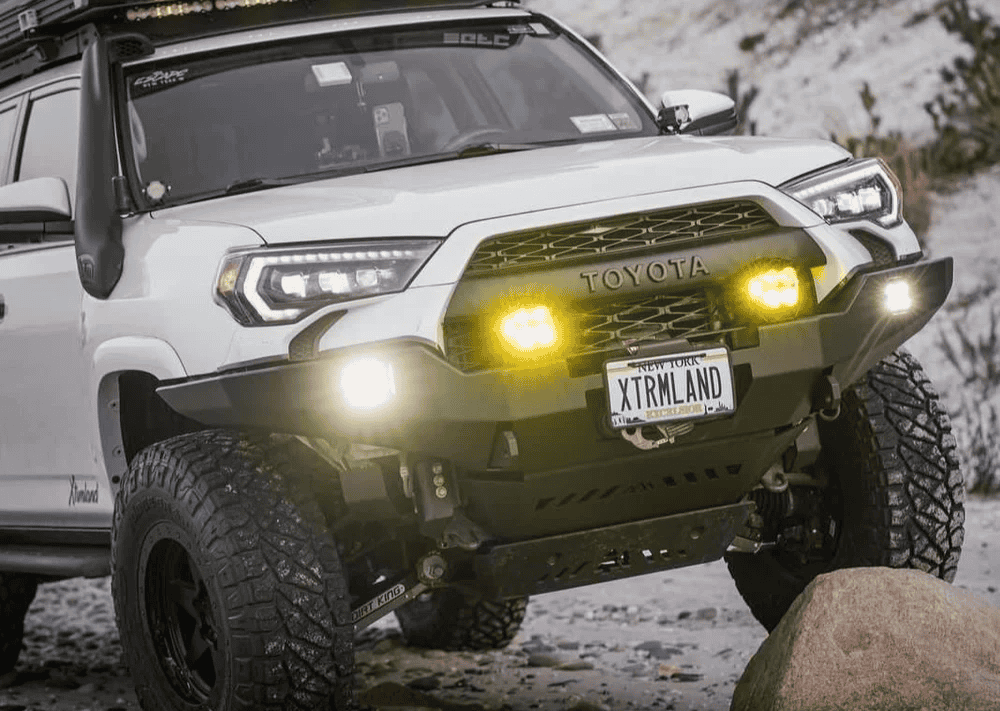Overland Vehicles

The right LEDs make a vehicle feel larger, safer, and easier to live with. Good placement and beam control reduce shadows, reveal storage, and protect night vision on trail approaches. Compared to halogen or fluorescent lamps, LEDs deliver high lumen output with low current draw, creating more usable light per amp hour. They also handle vibration better, which matters when gravel roads and washboard are part of the plan.
Light quality sets the mood and function. Warm white in the three thousand kelvin range calms the cabin for evening routines, while neutral white around four thousand kelvin sharpens detail for cooking or wrenching. A high color rendering index helps you see true colors for wiring, maps, or medical supplies. Diffused lenses soften hotspots for living spaces, while narrow optics help spot obstacles outside.
Electrical design is just as important as fixture choice. Proper wire gauge keeps voltage drop low so lights stay consistent from front to back. Fusing protects each circuit, and clean grounds reduce noise and flicker. Many builders use discrete switch panels, while others prefer digital controllers with scenes for camp, drive, and sleep. Either way, plan the harness early so the lighting works with insulation, cabinetry, racks, and power systems.
Start with zones rather than individual fixtures. Think cockpit, galley, bed, garage, awning, and perimeter. This helps you choose the right beam, color, and intensity for each task without overloading one switch bank.
Consider how you will manage power. A dedicated lighting fuse block simplifies service and keeps critical circuits separate from heavy draws like air conditioning or inverters. If you rely on a house battery, a DC to DC charger keeps voltage stable for consistent light output on long drives. When solar contributes, use efficient fixtures so your lighting budget leaves room for other loads.
Dimmable drivers let one fixture serve multiple roles. Bright for cooking, dim for conversation. Pulse width modulation offers smooth control when components are matched, while analog dimming can be simpler for basic zones. Scenes that switch several circuits at once reduce fumbling and make it faster to set camp.
Bundle harnesses by zone and label both ends. Use abrasion resistant loom and proper strain relief at every pass through. Seal exterior connections and choose fixtures with appropriate ingress ratings for rain, dust, and wash. Test for voltage drop at the farthest light on each circuit to confirm sizing before buttoning up panels.
Every positive lead needs a fuse sized for the wire. Use quality switches and relays rated for the expected current. Keep lights clear of airbag paths and do not block sensors. Aim any forward facing auxiliary lights so they do not create glare for other drivers and verify local rules for street use.
Cramming too many bright fixtures into a small space can feel harsh rather than helpful. Instead, layer soft ambient light with a few focused task lamps. Mounting exterior lights without shielding can reflect off the hood or bodywork and wash out your view. Overlooking serviceability means replacing a driver requires tearing out trim. Plan access panels where drivers or connectors are likely to live.
Skipping dimmers is another regret. Full brightness is rarely needed indoors at night, and high output can attract bugs. Inside, choose warm to neutral tones for comfort and save cool white for work areas.
A cohesive LED system is more than parts. It is an electrical map that respects how you move through the vehicle, how you camp, and how you drive after dark. The result should feel invisible until you need it, then effortless and dependable.
If your build leans toward remote trails or multi day travel, explore overland rigs for examples of integrated lighting around roof racks, bumpers, and cargo systems. For specialized layouts, see how a custom overland upfit blends interior zones with exterior work lights and perimeter safety. Curious about our approach to planning, integration, and client support before and after handoff? Read why choose OZK to understand our process and standards.
OZK Customs designs and installs vehicle lighting that feels natural, looks clean, and stands up to mud, rain, and miles. Tell us how you travel and we will map zones, select the right optics and color temperatures, build a safe harness, and install controls you can trust. Whether it is a quiet cabin glow or trail ready illumination, we will make sure every switch earns its place.
Ready to upgrade your van or truck with clean, reliable lighting that just works every time you flip a switch? OZK Customs designs and installs LED systems built for travel, work, and off grid life. Tell us how you use your rig and we will engineer the right fixtures, wiring, and controls to match. Start your build plan now and leave dim corners and wiring guesswork behind.
ADDRESS:
6159 E Huntsville Rd, Fayetteville, AR 72701
PHONE:
(479) 326-9200
EMAIL:
info@ozkvans.com